The average survival rate for Acute Lymphoblastic Leukaemia (ALL), the most common type of children’s cancer, has gone from under 20% to 85% – unfortunately this is not the case in South Africa though ?
Cutting-edge treatments are constantly being developed for even the toughest cases, but once again, these treatments are not available in South Africa!
Children’s cancers are unique, but the lessons learned from the extraordinary success of consecutive clinical trials have paved the way for advances in cancer treatment in general. New scientific breakthroughs are happening extremely quickly in medicine these days, far quicker in actual fact than the ability to develop and fund new treatments. Unfortunately this also means wrestling with uncomfortable questions of fairness in deciding priorities — who will be treated first?
One of the most important developments in Childhood Cancer is the ability to tailor treatment — to figure out who needs powerful doses of chemotherapy and who could do with less. Lighter treatment causes less long-term damage to the rest of the developing body — very important for children who have their whole lives in front of them. In some subgroups of patients with ALL, we’re getting better-than-90% survival rates using minimal therapy. This will allow children to recover more fully, without long-term side-effects and with a normal life expectancy.
Right now, there are two groups of kids with ALL at high risk of dying: those with treatment-resistant disease, and those whose cancer recurs either more than once or after receiving a stem-cell transplant.
Even for these toughest cases though, there is now a promising new treatment: a type of immunotherapy calledCAR-T that harnesses the body’s own immune system to destroy cancer cells. Doctors remove immune cells, called T cells, from the child’s blood and reprogram them to find and destroy the leukaemia cells by changing the DNA that controls the immune response. Those cells are put back into the child’s bloodstream, where they multiply then track down and kill the cancer cells. (The first Child with Cancer to receive this experimental treatment, a girl who had been destined to die, is alive and well 12 years later.)
As doctors and scientists home in on the toughest cases, treatments will become more “customised” and more expensive. It currently costs in excess of $2 million to save the life of a child sent to the U.S. for the new CAR-T therapy. If this treatment was available in other countries, it would cost far less, and would be far less disruptive to both the Child with Cancer as well as the rest of the family who generally have to move to the US for at least the duration of the treatment.
It is hoped that the role of CAR-T treatment can be expanded to other types of cancer next — for example, brain tumours, which are the second-most-common group of childhood cancers.
The problem is that many medical aids will not cover such exorbitant costs. Also, there’s never going to be enough money to fully fund every emerging treatment and to try “everything” in every case, so pursuing one type of costly treatment means less money for another.
Many medical ethicists, governments, health-care professionals and ultimately everyone in society is grappling with the question of “If it costs $2 million for that treatment for one child but there are far fewer children with leukaemia than there are adults with breast and prostate cancer, and that amount would treat far more adults, What is a fair expense?”
Ultimately, every advance we make in treating any type of cancer could help us to develop treatments for others, and hopefully we will see survival rates continue to rise, allowing the bedside role more and more to encompass hope as well as compassion.



Most Commented